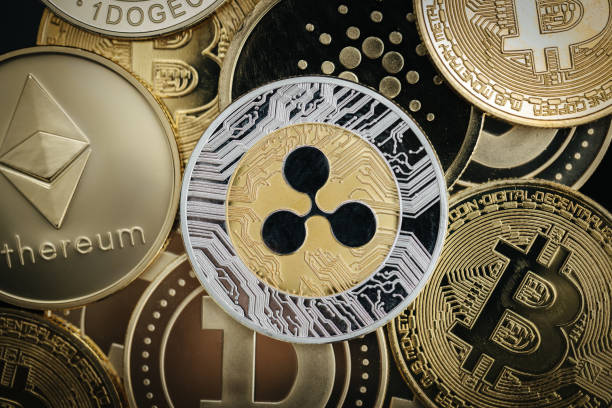In the rapidly evolving landscape of cryptocurrency, advancements in blockchain technology continue to capture the attention of both seasoned investors and tech enthusiasts. Recently, a key development emerged from the Ripple community, shedding light on efforts to bolster the robustness and decentralization of the XRP Ledger (XRPL). David Schwartz, Ripple’s Chief Technology Officer, has independently embarked on a mission to enhance the network’s infrastructure by implementing a new, high-performance server. His initiative underscores the ongoing dedication to improving the XRPL, contributing to its scalability and resilience in the long term.
David Schwartz’s Initiative: Enhancing XRPL with a New High-Performance Server
Boosting XRPL Stability Through a Strategic Infrastructure Upgrade
David Schwartz, who is also known by his alias ‘JoelKatz’ on social media, shared an insightful update about his latest project—an independent effort aimed at strengthening the XRP Ledger. Schwartz identified a key improvement for the XRPL: the implementation of a powerful server hub that allocates specialized connection slots for UNL validators, vital nodes, and XRPL-based application servers. This infrastructure upgrade is designed to enhance the network’s reliability and connectivity, thereby reinforcing the ecosystem’s foundational principle of distributed trust.
Though Schwartz holds the position of CTO at Ripple, he clarified that this initiative is a personal endeavor, separate from his corporate responsibilities. The overarching objective is to promote decentralization and diminish reliance on a single point of failure within the XRPL. By introducing this infrastructure, Schwartz envisions a more robust and resilient network, which is crucial as the ecosystem continues to expand and gain traction among global financial institutions.
Technical Specifications and Deployment Overview
In actualizing this vision, Schwartz has equipped the new server with an AMD 9950X CPU, 256GB of RAM, a 2TB boot SATA SSD, and dual 2TB NVME SSDs configured in software RAID 0 to optimize NuDB performance. This robust hardware setup is complemented by a 10GB unmetered internet link and operates on Ubuntu LTE. The server is currently live in a New York City data center, synchronized with the XRPL and contributing to its connectivity. Although it’s still undergoing stability assessments, Schwartz anticipates it will soon be ready to handle production-level activities for key components of the network.
To balance reliability and accessibility, the server reserves a portion of its slots for high-priority connections, such as validators and hubs, while offering the remaining slots to the public on a best-effort basis. Over the coming weeks, rigorous testing will ensure the server’s capacity to manage critical network activities without causing any disruptions, unless extraordinary circumstances necessitate such measures.
Strengthening the XRP Ledger Ecosystem
David Schwartz’s initiative highlights the critical role independent validators play in reinforcing the XRP Ledger’s infrastructure. As the XRPL continues to gain utility and adoption, particularly among financial institutions, these proactive steps are essential in maintaining a durable and efficient network. Schwartz also emphasized that XRP’s long-term value will be driven by its practical utility in real-world financial applications, despite recent fluctuations in its market price.
What is the significance of David Schwartz’s new server for the XRPL?
The new server deployment by David Schwartz enhances the XRPL by offering improved reliability and connectivity for critical network components. By reducing the dependency on a single point of failure, it supports the decentralization goal of XRPL, making it more resilient and efficient.
How does Schwartz’s server contribute to the decentralization of the XRP Ledger?
Schwartz’s server promotes decentralization by providing infrastructure that independently supports the network’s critical functions. This reduces the reliance on any single entity and aligns with XRPL’s goal of distributed trust, thereby enhancing the ledger’s overall stability and resilience.
Why is decentralization important for blockchain networks like the XRPL?
Decentralization is crucial for blockchain networks as it ensures no single entity has control over the entire system, reducing the risk of failures and enhancing security. It fosters trust among users and stakeholders by enabling transparency and distributed authority.
Is the new server part of Ripple’s official infrastructure?
No, David Schwartz clarified that this is a personal project, independent of Ripple’s corporate infrastructure. Although he is Ripple’s CTO, his initiative is a separate contribution aimed at strengthening the XRPL with enhanced performance capabilities.

